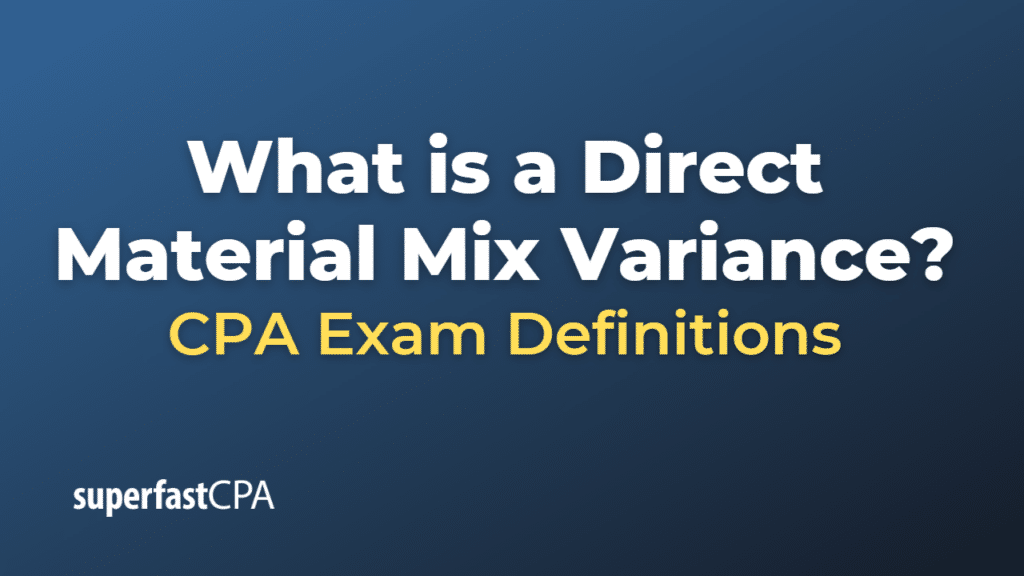Direct Material Mix Variance
Direct Material Mix Variance is a subset of material variance analysis that measures the difference between the actual mix of materials used in production and the standard (or planned) mix of materials, keeping the total quantity constant.
It is used in cost accounting to help management understand whether the actual mix of raw materials used in production was cost-effective compared to the standard mix. It considers the cost differential among the various materials used in the production process.
The formula to calculate direct material mix variance is:
Material Mix Variance = (Actual Quantity of Individual Material – Standard Quantity of Individual Material) * Standard Cost per Unit
A positive variance indicates that more lower-cost materials were used in the mix, resulting in a lower total cost than planned. A negative variance indicates that more higher-cost materials were used, resulting in a higher total cost than planned.
It’s important to note that direct material mix variance can be influenced by several factors, including changes in supplier prices, changes in product design, or unexpected changes in the availability of certain materials.
Example of a Direct Material Mix Variance
let’s consider a company that produces a product using two types of materials: Material A and Material B.
The standard mix for production is to use 3 units of Material A and 2 units of Material B per product. Material A costs $10 per unit and Material B costs $20 per unit.
Now, due to certain circumstances (such as availability or market conditions), the company changed its mix and actually used 2 units of Material A and 3 units of Material B per product.
To calculate the Direct Material Mix Variance, we’ll have to use the formula:
Material Mix Variance = (Actual Quantity of Individual Material – Standard Quantity of Individual Material) * Standard Cost per Unit
For Material A, the variance is:
= (2 units – 3 units) * $10/unit
= -1 unit * $10/unit
= -$10
For Material B, the variance is:
= (3 units – 2 units) * $20/unit
= 1 unit * $20/unit
= $20
So, the total direct material mix variance is -$10 (Material A) + $20 (Material B) = $10.
This positive variance indicates that the actual mix of materials was more cost-effective than the standard mix. However, it’s also crucial to consider that changing the material mix can impact the quality or characteristics of the finished product, so any changes need to be carefully evaluated.













